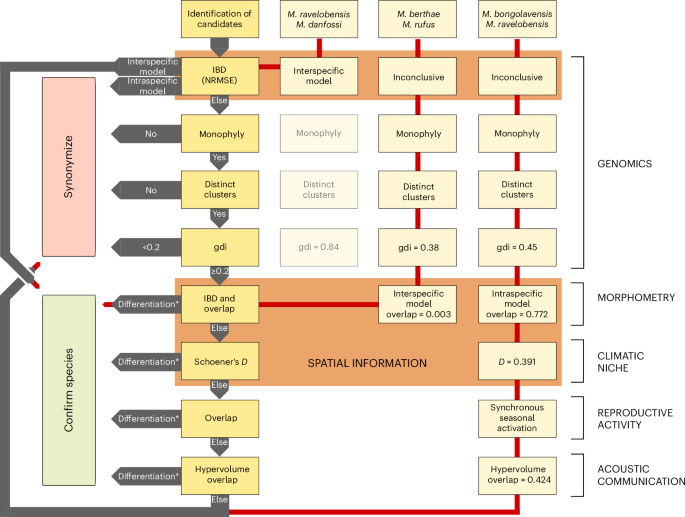综合分类法澄清了一个隐蔽灵长类支系的进化过程
IF 13.9
1区 生物学
Q1 ECOLOGY
引用次数: 0
摘要
全球生物多样性正加速受到威胁,物种在被描述之前就已灭绝。马达加斯加的生物区系就是这种情况的一个极端例子,更复杂的是,其特有的生物多样性大多是隐性的。在这里,我们提出了一个综合框架,利用多种证据和分类群为划分物种提供依据,同时特别强调识别距离隔离的模式,以此说明澄清隐性多样化过程的最佳做法。我们将这一框架系统地应用于整个在分类学上有争议的灵长类动物支系--鼠狐猴(Microcebus属,Cheirogaleidae科)。我们证明,物种多样性被高估的主要原因是将地理变异解释为物种分化,这可能会对进化多样化的基本过程产生偏差。在对分类进行修订后,我们发现该属内的隐裂现象可以用稳定选择和中性生态位多样化过程强加的形态停滞模型得到最好的解释。最后,通过澄清物种限制和定义具有进化意义的单元,我们提供了新的保护优先事项,在一个可推广的框架内将基本目标和应用目标联系起来。本文章由计算机程序翻译,如有差异,请以英文原文为准。


Integrative taxonomy clarifies the evolution of a cryptic primate clade
Global biodiversity is under accelerating threats, and species are succumbing to extinction before being described. Madagascar’s biota represents an extreme example of this scenario, with the added complication that much of its endemic biodiversity is cryptic. Here we illustrate best practices for clarifying cryptic diversification processes by presenting an integrative framework that leverages multiple lines of evidence and taxon-informed cut-offs for species delimitation, while placing special emphasis on identifying patterns of isolation by distance. We systematically apply this framework to an entire taxonomically controversial primate clade, the mouse lemurs (genus Microcebus, family Cheirogaleidae). We demonstrate that species diversity has been overestimated primarily due to the interpretation of geographic variation as speciation, potentially biasing inference of the underlying processes of evolutionary diversification. Following a revised classification, we find that crypsis within the genus is best explained by a model of morphological stasis imposed by stabilizing selection and a neutral process of niche diversification. Finally, by clarifying species limits and defining evolutionarily significant units, we provide new conservation priorities, bridging fundamental and applied objectives in a generalizable framework. A spatial taxonomic framework integrating genomic, morphological, ecological, life history and acoustic data is used to clarify the cryptic evolution of the taxonomically controversial mouse lemur complex, with a view to aiding future conservation of this and other similarly cryptic clades.
求助全文
通过发布文献求助,成功后即可免费获取论文全文。
去求助
来源期刊

Nature ecology & evolution
Agricultural and Biological Sciences-Ecology, Evolution, Behavior and Systematics
CiteScore
22.20
自引率
2.40%
发文量
282
期刊介绍:
Nature Ecology & Evolution is interested in the full spectrum of ecological and evolutionary biology, encompassing approaches at the molecular, organismal, population, community and ecosystem levels, as well as relevant parts of the social sciences. Nature Ecology & Evolution provides a place where all researchers and policymakers interested in all aspects of life's diversity can come together to learn about the most accomplished and significant advances in the field and to discuss topical issues. An online-only monthly journal, our broad scope ensures that the research published reaches the widest possible audience of scientists.
 求助内容:
求助内容: 应助结果提醒方式:
应助结果提醒方式:


